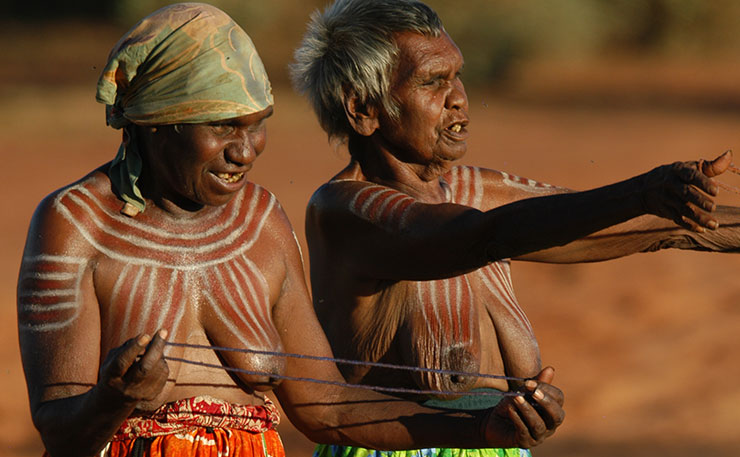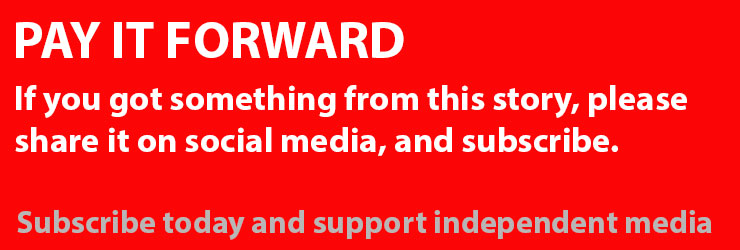Celeste Liddle, Arrernte woman, unionist, writer, feminist and activist – not necessarily in that order – was the keynote speaker last night at the Queen Victoria Women’s Centre’s annual International Women’s Day address. This is an unedited version of her speech.
I am, through my father’s side of the family, an Arrernte woman. For those not sure where the Arrernte homelands are, we’re desert peoples and these lands are pretty much in the exact centre of this Australian landmass.
My family are traditional owners of Alice Springs proper, as well as much of the lands surrounding this area. Liddle is a gigantic central Australian family, and as I have previously said: if they’re black and they’re Liddle, I’m related to them.
Through my grandmother, we are also Perkins’s which is another well-known Territory family with a number of high-profile members. My mother, on the other hand, is a white Australian woman and a Clifton Hill-born Collingwood supporter. On her side of the family, we had a number of factory workers who also tended to be union delegates, and just generally blue collar working class types.
My mum was, and still is, a hard core Whitlamite. Between these two sides of the family then, I often state that I didn’t have a chance. It was an Aboriginal feminist trade unionist with a dislike for authority or nothing.
I myself was born in Canberra in 1978. A lot of people born in Canberra don’t tend to brag about that fact unless they’re still living there in adulthood, but I was always really proud of the fact.
For one, while it may have been utterly freezing during winter when I was growing up, school holidays were often spent at a hippy arts programme where we’d do pottery, finger paint, walk on stilts and go yabbying.
A little known fact about Canberra is that while it has a conservative and clean-cut exterior, it also is a town consisting of educated lefties and hippies, so these weird-yet-wonderful progressive experiences were pretty normal.
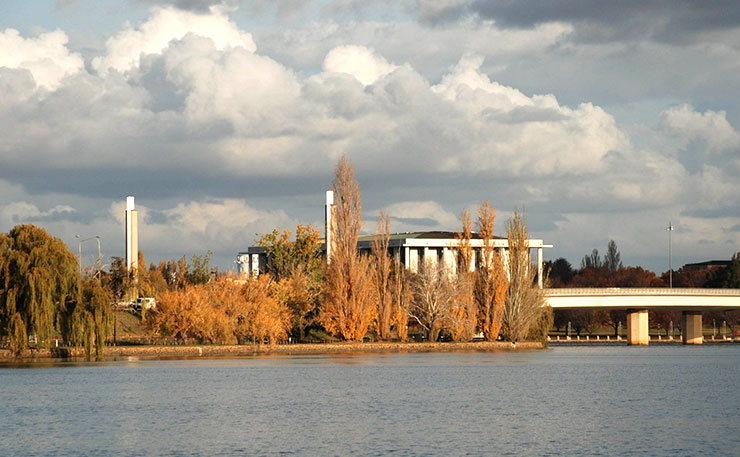
For another, we were utterly immersed in the political system from a young age, and so via things like a “class parliament” in which I was “Member for Liddle in the Opposition”, as well as regular excursions to firstly the old, and secondly the new Parliament House, along with embassies and other state buildings, meant that political knowledge was normalised and indeed, encouraged.
Finally though, 1980s Canberra was a vibrant place when it came to Indigenous politics.
The bicentenary celebrations saw some massive protests in the ACT, and the one I remember more than any others was the Indigenous convergence at the opening of the New Parliament House in 1988.
I had grown up surrounded by Aboriginal and non-Aboriginal relatives in Canberra with both sides of the family well represented there for some reason. We’d often be gathering at each other’s places and in particular, visits to Uncle Charlie’s or Uncle Kwenmentyaye’s house (I’m not saying his name as he recently passed away, but for those who might know who I’m referring to here, this man wrote the song “Brown Skin Baby” and was the younger brother of my grandfather) meant that there would usually be a lot of the extended family, as well as many other mobs, present.
Never before though, had I seen as many Aboriginal people as I saw at that protest.
Everywhere I looked, there were Aboriginal people – carrying placards, marching and chanting, much to the bemusement of the folks there who had actually gathered for the official opening ceremony of the New Parliament House.
Those people certainly weren’t hearing much over the chants of the protesters. The preferred protest chant at this time was “Land rights now, bicentennial bullshit” and we were stoked as kids that we were allowed to join in with this cussing and indeed, our parents encouraged it.
It’s a bit sad that 28 years later, beyond Mabo, beyond Native Title, beyond the Federal Apology to the Stolen Generations, we are still having to chant for land rights, and that battle has continued.
I’ve digressed a bit, and I think it should be known that like a lot of writers, I’m not a terribly “linear” person. But my point for going on this bent is to highlight to you all that when it came to my Arrernte identity and the political imperatives attached to this, I understood this from a young age. It was indeed part of my childhood reckoning.
I was surrounded by people engaged in the struggle as part of my normal upbringing. When I was five-years-old and in the first year of primary school, this girl in my class who was clearly a mean little individual (or at least, the product of mean individuals) referred to me as a “black bum”, and I pushed her over.
On my school report that year, it stated something along the lines of “Celeste is an eager pupil who has shown a lot of development in her reading and writing this year. She does, however, need to learn how to control her temper” mainly in reference to this instance. So even, on the rare occasion, I didn’t understand that I was Aboriginal, someone would be around to remind me in the playground.
Parallel to this though, was the fact that I had, from a young age, been reminded constantly that I was a girl and that due to this, certain behaviours were expected. I wasn’t, for example, supposed to be wilful and stubborn as this was an unseemly way for a young girl to act.
Yet I became known for this from a young age, and my poor mother was left seeking assistance because I was that immovable, even at the age of three. I knew that I was supposed to be “pretty” and well presented, yet while my younger sister would spend hours in front of the mirror, admiring her reflection and preening, they were hard-pushed keeping me clean.
My favourite childhood activities involved rigging up makeshift circus equipment, walking on a barrel in the backyard, and climbing on the roof of the garage. I had been enrolled in classical ballet classes since I was about four-years-old, yet I started to really resent it as I got to around 10. I had wanted to do gymnastics for years because it seemed a lot more fun.
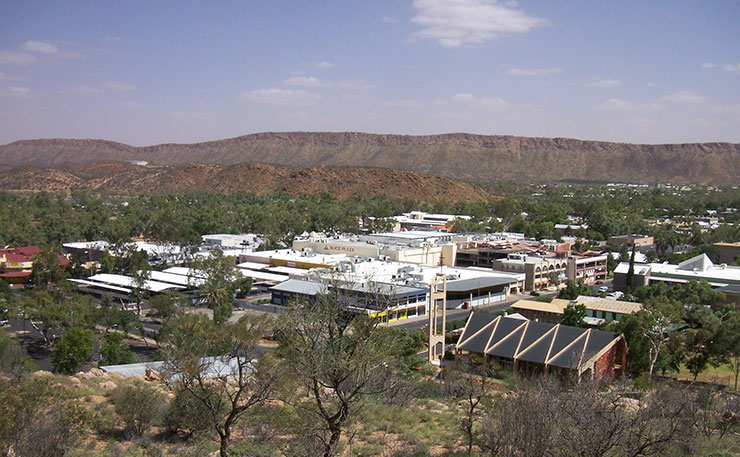
I loathed having long hair and having a face covered with make up for concerts. I knew I was supposed to stand back and that “boys are strong, like king kong. Girls are weak, chuck them in the creek”.
Showing therefore that I was more intelligent or physically more able than any of the lads was not the done thing, though concealing this stuff was also incredibly difficult.
I know I was supposed to be playing with dolls and talking about babies and weddings and the like because that stuff is drilled into so many young girls from an early age, and I had peers in primary school who would talk about these things. I found it so incredibly hard to fit in and indeed, as a natural introvert, I just tended to withdraw.
Then when I was about 11, I rejected pretty much all the trappings of enforced femininity as my 11-year-old self saw it. I cut off all my hair and while it may have been a bit of a mullet, it was the 80s and I was pretty proud of it.
I quit ballet and started gymnastics. I got around in mainly jeans and pants and I rejected my name which I perceived to be “too girly”, and instead insisted on being referred to as a nickname, which was probably partially influenced by reading too many Famous Five books.
It felt liberating, it felt more authentic. I got relentlessly teased in a way which continued until about year 8, when I underwent a re-feminisation in order to be more socially acceptable. I wish someone would have told me back then that, as an Aboriginal woman from a working class background, I had utterly no hope of ever being socially acceptable and my true power lay in being as socially unacceptable as possible.
So as a kid, I was more than aware that I was Aboriginal and a portion of people in this country saw this as a bad thing. This seemed to get even worse when I was nearly 14 and we moved from Canberra, where I was able to access Aboriginal programmes, to the outer south eastern beachside of Melbourne where no such thing existed.
I was equally aware that I was a girl and this too was bad. My major purpose was to be attractive to men, submissive to men, and defer to men in all their authority.
The battles of class would also continually wage on the playground. My parents had a mortgage they were working through, but we were clearly still very working class and as we didn’t have much, while not being outright “povs”, we were seen as such because we weren’t decked out in Reeboks and were of Aboriginal descent.
Kids who were from wealthier backgrounds would parade this around and encourage envy from their classmates. This was my childhood reckoning. I could either reject it and try and assimilate, or I could own it.
My mum was always sneaking fragments of feminism into our upbringing. She wasn’t too keen on us having dolls or toy guns in the house and tended to prefer educational toys and the like. She was still in some ways quite conservative when it came to issues of appearance and how young women should present which, at times, made it hard for her to get me.
But amongst that was a 1960s and 70s progressive and she would question things. I remember her giving me Virginia Trioli’s “The F-Word” as a teenager in the hope it would inspire. I think though, my actual reckoning as an Aboriginal feminist came when I read the following poem by Oodgeroo Noonuccal called “no more boomerang”.
I’ve done this publicly before, and I apologise to all of those who may have heard me read this previously, but to give a brief background, when I was in year 9, I was the only openly identifying Aboriginal student in my entire high school. During this year, we had a “multicultural assembly” and I was approached by a teacher to contribute something Aboriginal to the proceedings.
I didn’t like the school terribly much. Year 8 there had been horrible, the principal seemed to think I was a bit of a trouble maker yet had no reason to think this so I can only put this down to prejudice.
I did well in class but I was incredibly isolated and would, in fact, fake illness to try and get out of going. I was told by some of my male classmates that I had been voted the “ugliest girl in year 8” after a dude poll had been undertaken.
Home was not too good at that stage either, so I felt rather trapped. One day, while hiding in the school library, I had found this book of poems by Oodgeroo Noonuccal. Noonuccal, who had previously been known as Kath Walker, was an Aboriginal activist, a communist and a writer who was a key figure in lobbying for the 1967 referendum, along with a number of other things.
Her first book We Are Going in 1964 was not only the first book to be published by an Aboriginal woman, but it also received critical acclaim despite some feeling it was “too black” to succeed.
This one poem had not only captured my imagination, but had also managed to establish some form of pride in both my Aboriginality and my womanhood, which was clearly lacking at that point. Because of all of this, when asked to do something in the multicultural assembly, I decided to make a statement. I issue a warning upfront about language and racial slurs contained within the text. I will not be removing these because they contain context regarding the times Oodgeroo Noonuccal wrote these in, and I also do not wish to disrespect her words. So this is “no more boomerang” and it was written in 1966:
NO MORE BOOMERANG
No more boomerang
No more spear;
Now all civilized
Colour bar and beer.
No more corroboree,
Gay dance and din.
Now we got movies,
And pay to go in.
No more sharing
What the hunter brings.
Now we work for money,
Then pay it back for things.
Now we track bosses
To catch a few bob,
Now we go walkabout
On bus to the job.
One time naked,
Who never knew shame;
Now we put clothes on
To hide whatsaname.
No more gunya,
Now bungalow,
Paid by hire purchase
In twenty year or so.
Lay down the stone axe,
Take up the steel,
And work like a nigger
For a white man meal.
No more firesticks
That made the whites scoff.
Now all electric,
And no better off.
Bunyip he finish,
Now got instead
White fella Bunyip,
Call him Red.
Abstract picture now-
What they coming at?
Cripes, in our caves we
Did better than that.
Black hunted wallaby,
White hunt dollar;
White fella witch-doctor
Wear dog-collar.
No more message-stick;
Lubras and lads
Got television now.
Mostly ads.
Lay down the woomera,
Lay down the waddy.
Now we got atom-bomb,
End everybody.
– Oodgeroo Noonuccal (1966)
Last time I read this poem out in public, I reflected on my reasons for choosing it as a 15-year-old high school girl in an incredibly white area where I had experienced a lot of isolation.
It’s fair to say that a fair chunk of my choosing it had to do with rebellion. I had, by that stage, had to deal with racism and sexism in the schoolyard. I had found it incredibly difficult changing schools at the beginning of year 8, as I had only just settled in at my old high school and while Canberra is also quite monocultural, it also had a certain progressiveness which I did not find in the outer suburban beachfront.
So when I read this poem, I was partially educating people about the process of colonisation (not that I possessed that vocabulary at that stage) and was partially asserting myself as an Aboriginal person, proud of that heritage.
It’s funny, but as the years have gone by, I have still drawn on this poem over and over again. There is so much I relate to within it. It was written, for example, as the Vietnam War raged on and Noonuccal’s final warning about the self-destructive nature of colonial regimes rang true when I was out on the streets protesting our involvement in the Iraq War.
I remain always opposed to war and as an avowed feminist, I feel it is crucial to remain so. To always preference peace, collaboration and negotiation.
The line about working for a “white man meal” reminds me of my grandmother – a stolen generation woman who was taken to the Alice Springs Bungalow and the Jay Creek Mission in the 1930s, where she was educated in domestic skills so she could then go and work for local white families for nothing; cleaning their houses, cooking their meals, looking after their children.
Despite being told she was going to school to “learn”, my grandmother couldn’t read until she was taught by my father in her 30s. The “got television now, mostly ads” reminds me why it was I unplugged the aerial of my television set about five years ago, and have not ventured to plug it in again since.
I remember though, on one occasion, the line “one time naked, who never felt shame, now we put clothes on to hide whatsisname” really came home.
I don’t know how many people present here follow my Facebook page – a few, I’d imagine. I’ve been running that page for nearly two years now and for the most part, it’s been a bit of a sanctuary.
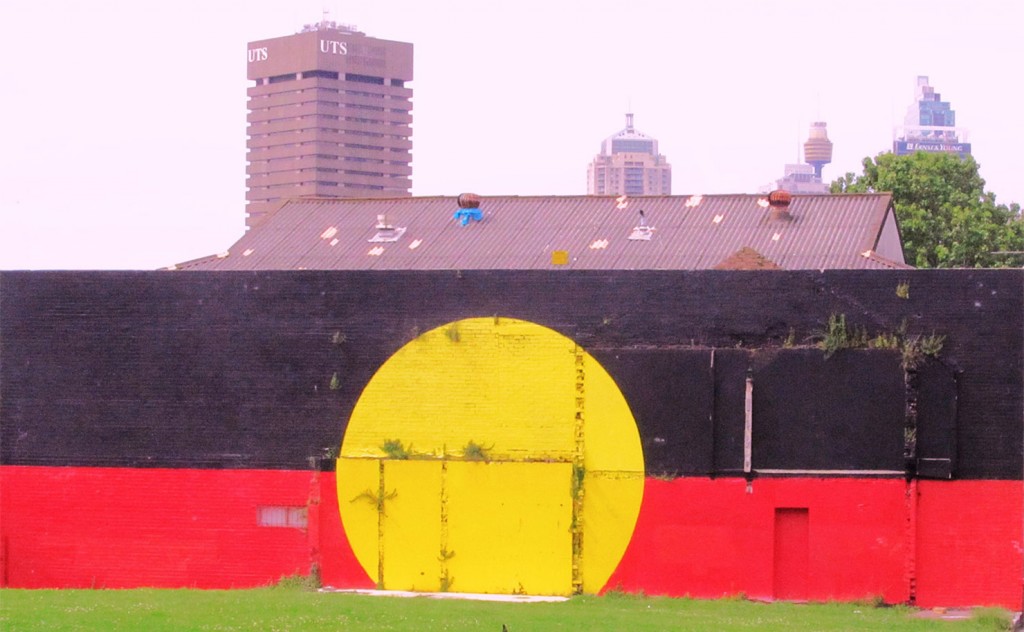
There are a lot of good people on it who accept my hardcore rules about it not being a space for the centralisation of privileged white male voices and contribute all sorts of wonderful stuff. It’s generally respectful and has a fair smattering of Indigenous, feminist and unionist/lefty politics on it.
Yet on one occasion, it got really threatened. I had posted something on it, and it led to me being barred from posting four times until I undertook the required checks to reinstate my account.
So what had I done? I had apparently breached Facebook’s codes with regards to nudity.
I don’t know if people remember, but last year the Indigenous comedy show 8MMM was released on ABC. I was very much looking forward to this show, particularly since it was based in Alice and therefore I knew quite a few people involved.
Yet there was controversy because when 8MMM released a promotional trailer for the show prior to it going to air. This trailer was banned by Facebook because it featured topless desert women painted up for ceremony engaging in traditional dance.
Facebook saw these topless women as “indecent” and in violation of their no nudity clause. On hearing this, I was outraged that Arrernte woman undertaking ceremony could ever be seen in this way so I posted the trailer up on my own page stating as such.
What I didn’t count on was a group of narrow-minded little white men deciding to troll my page so each time I posted it, I not only got reported by them but I also got locked out and the video got removed.
Initially, I had just accompanied the video with a chipping comment about white people putting their silly body-shaming issues on to Aboriginal women, but after the fourth lock out, I got a bit angry. I may have responded to them like this:
Dear pathetic little losers who keep reporting articles about the censorship of desert women undertaking ceremony as “nudity”. Your racist, misogynistic and, dare I say it, ageist views of these women is your problem, not theirs. These are proud and cultured women who, despite centuries of assimilation programmes, continue to survive and practice culture. Perhaps that is what offends you the most: you cannot assimilate these women into your prudish and deeply flawed ideas of decency and by merely existing in their cultural space they threaten your relevance? Poor petals. Or perhaps I deleted your comment or banned you and you merely cannot abide any space where you are not relevant at all? Either way.
May I suggest you get a hobby? Perhaps you can start you own page about how disgusting you find women’s bodies and how wrong other cultures are compared to yours. I mean, Facebook could always use a few more of those pages as millions of them simply aren’t enough. Or perhaps even take up Chess, though you probably wouldn’t like it considering the most powerful piece is a female. Either way, take your sad little white man tears and sod right off.
It was fascinating. Yes, I admit I had posted the original video on my page to call out Facebook’s ridiculous standards, but the actions of these frightened little men was something else entirely.
They clearly took great offence at Aboriginal women, a lot of whom were not young, not only inhabiting their bodies in a way that showed no shame but also undertaking culture within a country which has continually tried to stop them from doing so.
My father, for example, was caned at school if he so much as dropped a single Arrernte word on the playground. I knew that should these women be young, blonde girls probably not of age, these “men” would not have a problem with their nudity. Indeed, on checking some of their pages I saw plenty of these types of pictures posted everywhere.
I say this, by the way, not to demonise young, pretty, blonde women but to point out that the offence actually comes from the male gaze, and what that gaze deems acceptable.
Aboriginal women are not acceptable. Older women aren’t acceptable, particularly if their breasts are pendulous rather than perky. Women being semi-naked for the purpose of taking part in women’s culture are not acceptable.
If they are going to be semi-naked, it needs to be for the enjoyment of men.
Finally, Aboriginal culture is unacceptable. We are a colonised landmass and therefore we should be doing everything to merely fit in, rather than celebrate our difference.
I remember talking to two older Aboriginal women one time who were not too happy with some non-Indigenous protesters who had used nudity in order to show their solidarity with an Indigenous cause.
We were unpacking why it was that we felt it was inappropriate, and it was a fascinating discussion because we were all coming from a culture where prior to colonisation, public nudity wasn’t even an issue.
So the Indigenous stance becomes complex. If you go to traditional communities nowadays, it is often expected that people will dress modestly in order to show respect.
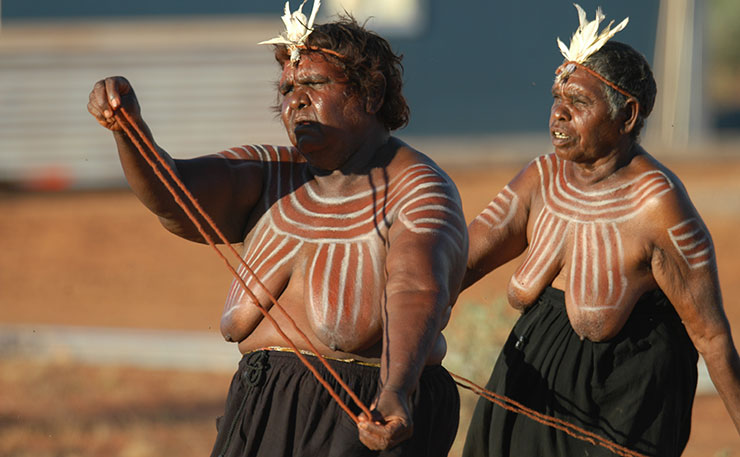
Yet prior to colonisation, showing your body wasn’t considered disrespectful. It was considered normal, natural and functional. Bad parts, good parts and dirty parts did not exist, they were all just parts which had purpose.
Where things are seen as functional, they’re rarely judged for being inadequate or wrong and so forth. Naked, pendulous breasts were indeed respected as a sign of a female elder and mother who had given life and nourished others.
The idea that any of these parts had shame attached to them was completely a symptom of colonisation. Where imported religious beliefs infiltrated via missions, suddenly the functional became the dirty and the shameful, and people who had no concept of physical modesty suddenly needed to adhere.
The conclusion we came to was interesting. The reason people covered up in these communities was not so different from the reasons people walked around naked and without judgement before. It was to protect the right to be seen as a functional human being without being chastised for it.
The mode of delivery had just changed due to the process of colonisation, so now these imported layers of bodily understanding had been imposed on top of traditional ways of knowing.
This was but one way this plays out continually for Aboriginal women today.
When I started writing, I was quickly labelled an “intersectional feminist”. It wasn’t a label I chose for myself and indeed, when first hit with it, I had to look it up.
It seemed that I earned this label because I speak continuously from an Indigenous left-wing feminist perspective.
The thing is, I don’t actually know how else to speak. I have always been all three of these things at once and it is very much how I experience the world.
I don’t usually have to work at being intersectional either, in ways that other people higher on the social strata tend to. They have to be more cognisant of their privilege and know where to make space in a way which I rarely do, because I’m the type who needs to be “included”.
Because of these various markers, when I started my blog “Rantings of an Aboriginal Feminist”, I was convinced no-one would read it, except perhaps other Aboriginal lefty feminists. Indeed, the title of it was a complete joke: me owning the angry black woman trope in my own little section of the anti-media in the hope that I’d scare off those who usually hung around the traditional media – privileged white dudes.
That a piece was picked up from it by a Fairfax editor six weeks after I started it for publication was completely unexpected. That other feminists seemed to embrace it was also unexpected. I think the most unexpected was when I realised it had become popular within anarchist circles. That was until I read just how many anti-government sentiments I had written in the text and how many times I referred to smashing the system. Then I thought, “oh yeah, I can see why now”.
It ended up giving me some insight on whereabouts I actually sat on the political spectrum.
I think because of all this, I tend to be a bit more tolerant of what some deem “white feminism” than a lot of my sisters of colour. One of my biggest Indigenous feminist inspirations when I went to university was another poet: Lisa Bellear.
Lisa was a Stolen Generation woman and an Aboriginal lesbian feminist. She was a strong community activist and absolutely everyone in the Victorian community knew her. She was also a radio broadcaster and avid community photographer who would almost always pass the photos she took of people back to the subjects for their own collections, because she did not believe in owning their images as a community member.
She passed away at the incredibly young age of 45 and still today, the hole she left in the community here is sorely felt.
At University, she was an older woman who took me under her wing, imparted knowledge and friendship freely, and was a true inspiration. Like with Oodgeroo Noonuccul, I’m going to read out a poem of Lisa’s which inspired me and gave me a lot to think of . And like “No more boomerang”, I have also previously read this one in a public space, so I apologise to those for whom this will be a repeat. This one is entitled “Women’s Liberation”. It was written in the mid-1990s, I believe:
Talk to me about the feminist movement,
the gubba middle class
hetero sexual revolution
way back in the seventies
when men wore tweed jackets with
leather elbows, and the women, well
I don’t remember or maybe I just don’t care
or can’t relate.
Now what were those white women on about?
What type of neurosis was fashionable back then?
So maybe I was only a school kid; and kids, like women,
have got one thing that joins that schemata,
like we’re not worth listening to,
and who wants to liberate women and children
what will happen in an egalitarian society
if the women and the kids start becoming complacent
in that they believe they should have rights
and economic independence,
and what would these middle class kids and white women do
with liberation, with freedom, with choices of
do I stay with my man, do I fall in love with other
white middle class women, and it wouldn’t matter if
my new woman had kids or maybe even kids and dogs
Yes I’m for the women’s movement
I want to be free and wear dunlop tennis shoes.
And indigenous women, well surely, the liberation
of white women includes all women regardless . . .
It doesn’t, well that’s not for me to deal with
I mean how could I, a white middle class woman,
who is deciding how can I budget when my man won’t
pay the school fees and the diner’s card club simply
won’t extend credit.
I don’t even know if I’m capable
of understanding
Aborigines, in Victoria?
Aboriginal women, here, I’ve never seen one,
and if I did, what would I say,
damned if I’m going to feel guilty, for wanting something
better for me, for women in general, not just white
middle class Volvo driving, part time women’s studies
students
Maybe I didn’t think, maybe I thought women in general
meant, Aboriginal women, the Koori women in Victoria
Should I apologise
should I feel guilty
Maybe the solution is to sponsor
a child through world vision.
Yes that’s probably best,
I feel like I could cope with that,
Look, I’d like to do something for our Aborigines
but I haven’t even met one,
and if I did I would say
all this business about land rights, maybe I’m a bit
scared, what’s it mean, that some day I’ll wake up
and there will be this flag, what is it, you know
red, black and that yellow circle, staked out front
and then what, Okay I’m sorry, I feel guilt
is that what I should be shouting
from the top of the rialto building
The women’s movement saved me
maybe the 90s will be different.
I’m not sure what I mean, but I know that although
it’s not just a women’s liberation that will free us
it’s a beginning.
I think Lisa’s book “Dreaming in Urban Areas” can still be found in some libraries and bookshops around the traps if people want to find it. But this poem resonated for me.
That tightrope that we walk being Indigenous activists and feminists can be a precarious one. And within the text, Lisa addresses everything from the radical feminists who believe that the feminist revolution will cure all society’s ills to the 80s liberal feminists who believed that economic empowerment and access to the same power structures as men was the key.
Like Lisa, I have been an identifying feminist from a young age. I think I was about 16 when I rejected the title “Miss” in favour of Ms and 17 when I addressed my school on an open mike day, telling all the women to ditch our razors because defuzzing was a rubbish waste of time.
Yet Lisa’s sentiments at the end, where women’s liberation is a beginning rather than what will ultimately free us, is a thought I share and indeed, extend to all the movements I am a part of.
I am a committed trade unionist, to the point of where I work for one union and am a member of two others. Yet if the workers’ revolution only really works to free white men then in my book, it’s failed to truly liberate workers.
Likewise, while I am a committed sovereignty activist, I have previously held gripes about being cast as a “backbone” of Aboriginal society because I am a woman.
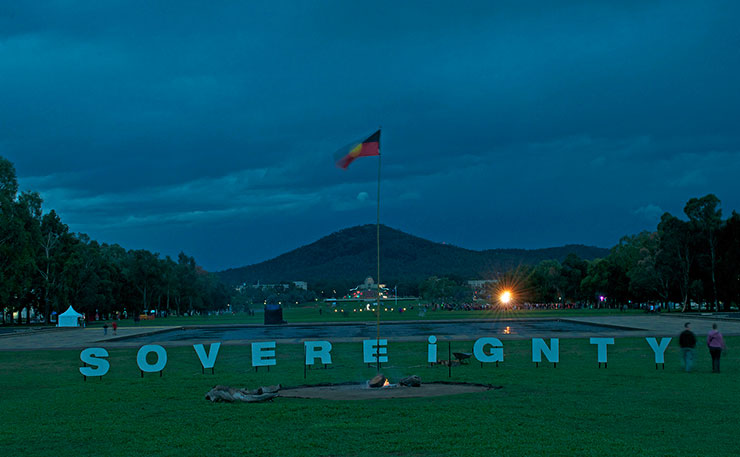
If women within the Indigenous movement are continually relegated to the support roles and the ones who hold together everyone else, then it won’t actually “liberate” because to do so, Aboriginal women need to be seen for the autonomous thought-leaders and frontliners that we are.
Lisa here has, of course, pulled apart the feminist movement and the danger it faces with liberating those who stand to benefit the least from said liberation: white women with financial means. And that, for me, is exactly what “intersectionality” is about: the liberation of the most vulnerable within any movement; those on the lowest rungs of society; because if the liberation of these people is successful, then all others will also benefit due to the power strata.
Instead of “trickle down liberation”, it’s starting at the bottom and smashing all the systems of oppression as we work our way to the top.
My view is very much, as an Aboriginal woman fighting within a colonised society, a lot of the issues that face white women also face me too, as we have not decolonised yet.
However, there are usually additional levels of complexity that need to be addressed: additional issues which contrast and issues which contradict. I think, for example, that the fight for birth control access in the 60s was one which was universal in a society which wished to control our fertility.
However, as mentioned by Aboriginal feminists back then, we were also fighting, in the face of the policies which led to the Stolen Generations, to keep our children with us.
As an Aboriginal woman, I feel the same pressures to be attractive, to dress and act in certain ways, while at the same time I am continuously being judged for being Aboriginal.
It’s not enough to look attractive enough, I have to also look dark enough. It’s not enough to sit back and defer to men, I’m supposed to also defer to white women who are higher on the social strata than me.
Sometimes within the Aboriginal community, we take on things the feminist movement has long disposed of such as beauty pageants for women, then we label them as empowering because they’re Indigenous initiatives. The ability to criticise this from a feminist perspective becomes difficult because we’re criticising the efforts of a displaced peoples.
Yet I cannot suddenly reconcile the idea that taking on oppressive practices which have been imposed upon white women for centuries becomes suddenly empowering when done in an Indigenous context. It doesn’t.
This is a dynamic I face often. I have previously said that where oppressive practices towards Aboriginal women exist in traditional cultural practices, we don’t always, as Aboriginal women, have the freedom to criticise them because in the face of colonisation, we are continually fighting to hold on to our culture.
There are so many out there in society, particularly the powerful white men, who are eager for the opportunity to discredit Indigenous people and practices and therefore we end up having to fight from the back foot all the time.
It’s why I also don’t have a lot of time for “choice feminism” – choice is inextricably linked to privilege and therefore to choose your destiny and call it empowering is more available the higher up the rungs you get.
The women who were continually referred to when the Northern Territory Intervention was being proposed as being the ones the government was saving from abuse had utterly no agency. For starters, they were always talked about yet I cannot recall a single instance where I saw one of them being talked to.
They were impoverished, they lived in remote areas and isolated towns, they were, of course, Aboriginal in a society which continually centralises whiteness and they were women in a society which continually centralises men.
They had no avenue for recourse through the government to overturn what was being done to them, they had no financial ability to seek independence, they had no self-determined services and indeed their entire lives were being governed. And there was a lack of interest from the general population with regards to this oppression, indeed, they continually seemed okay with the government justifications for removing all the rights from this group of people because they really don’t want to know any better.
So when I’m saying that liberation occurs for all when those on the lowest rungs of society are liberated, I precisely mean women like these women. We need their voices and their freedom if we indeed want to strive to be an egalitarian society comprised of respect and esteem for one another.
Donate To New Matilda
New Matilda is a small, independent media outlet. We survive through reader contributions, and never losing a lawsuit. If you got something from this article, giving something back helps us to continue speaking truth to power. Every little bit counts.

